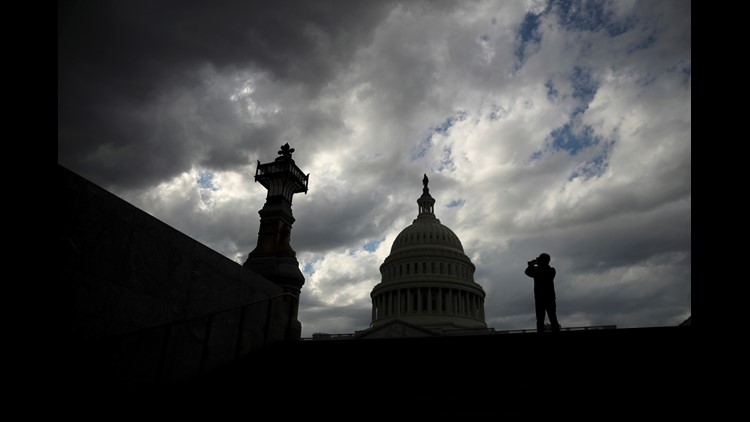WASHINGTON – It was a clarion call from the White House briefing room, that the threat from Russia was real.
The nation’s top national intelligence officials took to the West Wing podium, as Director of Homeland Security Kirstjen Nielsen encapsulated the message in stark terms.
“Our democracy is in the crosshairs,” Nielsen said. She added, “we have seen a willingness and a capability on the part of the Russians,” to hack the American election infrastructure, including voter rolls and voting machines.
But only six blocks from the August news conference, the urgency may not have seemed apparent, with the D.C. Council in summer recess, and a $3 million election security grant waiting to be approved.
With less than 60 days before the midterm elections, the District has spent $0 of the $3 million grant, according to interviews and documents reviewed by WUSA9.
Election officials are eager to buy new ballot scanners with increased vote protection features and hire a chief information officer for cyber security.
But the most optimistic timetable to make the first purchases and investments could be early in the fall, only days before voters in the nation’s capital head to the polls.
“I can’t be sure what we will actually be able to use before November,” said Rachel E. Coll, a spokesperson for the District of Columbia Board of Elections.
“Our funds have not yet been loaded, so at this point, nothing is available for use.”
The funding comes straight from the federal government, distributed to the states by the relatively new agency known as the U.S. Election Assistance Commission (EAC).
EAC officials said the agency sent $3 million to the District by mid-June. But nothing has happened with the money since. And nothing can happen, until the D.C. Council acts.
Only the council can approve grants greater than $1 million, according to the Office of the Chief Financial Officer.
Council members will return from their summer recess Sept. 17, and only their approval can send the federal funds to the Board of Elections.
But there’s no guarantee the matter will be immediately addressed on the 17th, according to a spokesperson for the chief financial officer.
A hearing on the District’s controversial tipped worker legislation is the only item on the calendar for the first day of the new session.
“We are hoping that by October the funds will be loaded and ready for use,” said Coll from the Board of Elections.
“In advance of the general election this November, again we hope to be able to fund the purchase of new equipment, temporary election workers, voter education and outreach efforts.”
Information requests and emails to election agencies outside the Beltway suggest the situation may be similar in Virginia and Maryland – with little, if any, of the funding spent.
Officials with the Virginia Department of Elections did not answer if any of the commonwealth’s $9 million federal grant has been used to prepare for the midterms.
The federal government issued the money to Virginia in mid-June.
Instead, a Richmond official said in an email that Virginia planned to use the funds in the future.
“We have received our funds, and they will be used for initiatives such as increasing cybersecurity training, increasing security for elections data, and establishing more robust certification standards for voting equipment,” said Andrea Gaines, a spokesperson for the Virginia Department of Elections.
“The Department will also secure a project team that will draft a security and continuity of operations plan, as well as help manage program costs.”
Maryland election officials reached Thursday and Friday said they believed at least part of the state’s $7 million grant had already been used for training purposes, but they could not immediately point to specifics.
The federal government disbursed Maryland’s money in May.
The funds are awarded in the form of Help America Vote Act (HAVA) grants, with the 2018 election assistance serving as the first HAVA appropriations since 2010.
According to a summary of the HAVA grants, most states and territories will spend their funds within the next two to three years, with a total of $380 million distributed across the country.



